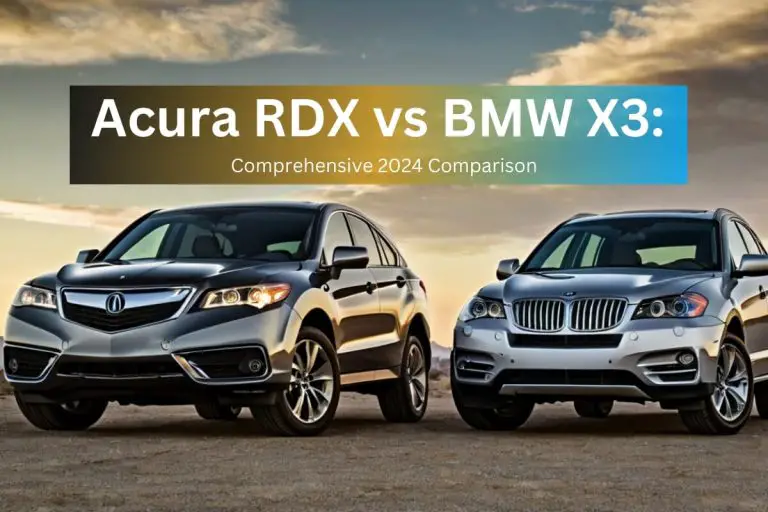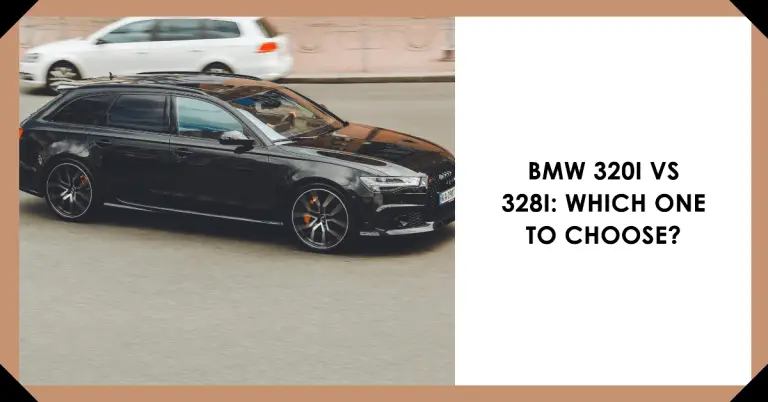BMW M3 vs M4: The Ultimate High-Performance Coupe Showdown
For over 30 years, the BMW M3 has dominated as the pinnacle of BMW’s M high-performance division. Lauded for its impeccable driving dynamics, beautiful styling, and everyday usability, the M3 delivered exhilarating performance in a practical package.
In 2014, BMW made the controversial decision to split the M3 line into two separate models – the M3 would continue on as a sporty four-door sedan, while the M4 designation would be used for M’s traditional two-door coupe version.
So how does the legendary BMW M3 compare to the newer M4 coupe? While both are fantastic driver’s cars, the M4 does edge out the M3 in several key areas. Keep reading as we dive into an in-depth comparison of exterior styling, interior features, performance specs, pricing, and overall value across the M3 and M4 lineups.
Exterior Styling and Dimensions
On the outside, the M4 sports a more aggressive, motorsport-inspired look compared to the M3. With its long hood, sharply creased lines, beefy fender flares, quad exhaust tips, and near perfect 50/50 weight distribution, the M4 definitely makes a bold visual statement worthy of the vaunted M badge.
The M4 measures 184.5 inches long, 73.6 inches wide, with a 110.7-inch wheelbase. Ground clearance comes in at 4.7 inches. Overall, the exterior dimensions and coupe profile are very similar to that of previous generation M3 coupes.
By contrast, the latest M3 sports a boxier, more conservative design that blends in better in ordinary traffic. The smooth sheetmetal and restrained styling almost disguise the potent performance capabilities that lie beneath.
With measurements of 184.0 inches long, 71.1 inches wide, a 112.5-inch wheelbase, and a ground clearance of 5.0 inches, the M3 sedan is slightly bigger than the M4 in most exterior dimensions aside from width. The larger dimensions do translate into increased interior space and practicality.
For buyers who want their car to make an instant visual statement, the bold looks and coupe styling of the M4 have an edge over the more subtle M3. However, the M3 definitely will appeal to those who prefer the four-door versatility.
Interior Comfort and Cargo Space
Inside the cockpit is where the differences between the M3 and M4 are most apparent. As a four-door sedan, the M3 naturally offers more interior room and practicality.
The M3 comes standard with seating for five, including two full-size rear seats that can actually fit adults in reasonable comfort on shorter trips. Legroom measures 41.5 inches up front and 35.1 inches in the rear. Headroom comes in at 40.3 inches in front and 37.7 inches in back.
In contrast, the M4 is strictly a four-seat automobile. Rear accommodations in the M4 are tight, with just 33.7 inches of rear legroom and 36.1 inches of rear headroom. The sloping rear roofline of the coupe also makes getting into the back a chore. Kids are okay for short rides, but most adults won’t tolerate the rear seats for long trips.
In terms of cargo hauling, the M3 sedan offers 17 cubic feet of trunk space, while the M4 coupe offers only 15.7 cubic feet in its cargo hold. The M3’s cargo area is also more accessible thanks to its convenient liftback design.
Overall, the M3 is the clear winner when it comes to interior roominess and practicality. But the M4 counters with a much more driver-focused cockpit layout oriented around performance driving. The interior ambiance of the M4 feels more special and luxurious as well.
Tech Features and Infotainment
As BMW’s newer model, the M4 comes equipped with more up-to-date tech and luxury features than the M3.
The M4 dashboard is dominated by two crisp, high-resolution display screens – a 10.25-inch central touchscreen for infotainment and navigation plus a 12.3-inch digital gauge cluster behind the steering wheel. The latest version of BMW’s excellent iDrive system now incorporates touch controls and haptic feedback. Optional gesture controls also allow you to operate some functions by waving your hand in front of the dashboard.
The M3’s user interface looks dated by comparison, with an analog gauge cluster and smaller 8.8-inch infotainment display powered by an older iDrive system. The technology works fine, but lacks the wow factor of the M4’s screens.
In terms of advanced driver assist systems, the M4 offers a suite of options that aren’t available on the M3 such as parking assistant, active driving assistant, and extended traffic jam assistant. However, with their performance focused mission, neither car offers a full range of driver aids and active safety tech.
Overall, the M4’s cutting-edge user interface and infotainment clearly outshine the M3’s aging electronics. The M4 takes better advantage of BMW’s latest technology, while the M3’s older components don’t feel worthy of an M car.
Engine Performance and Fuel Economy
Under the hood is where things get really interesting between the M3 and M4. Let’s break down how the engines compare:
The M3 comes equipped with a 3.0-liter twin-turbo inline six-cylinder engine that produces 473 horsepower and 406 lb-ft of torque. In the M3 Competition variant, output is bumped up to 503 horsepower. While not as glorious sounding as the old naturally aspirated V8, the turbo inline six delivers incredible thrust with virtually no turbo lag.
The M4 also packs a twin-turbo 3.0-liter inline six, but output is rated at 405 horsepower and 406 lb-ft in the base model. The M4 Competition turns up the wick to 503 horsepower, matching the M3.
Clearly, BMW’s recent power wars have resulted in the M3 and M4 models sharing nearly identical engine specs, especially in Competition trim. In straight line acceleration, there’s no definitive edge for either car. Both hit 60 mph from rest in just 3.4 seconds – a staggering figure.
Fuel economy between the M3 and M4 is very similar. The M3 is EPA rated at 15 mpg city / 21 mpg highway / 17 combined while M4 efficiency comes in at 15 city / 22 highway / 17 combined. Considering the outrageous performance, fuel economy is quite reasonable for daily use. Premium grade 91 octane fuel is required for both cars however.
While the engines are closely matched, the M3 does edge out the M4 slightly with its extra 48 horsepower in base form. The soundtracks from both six-cylinder motors disappoint compared to older M3s and M4s, but the power delivery is astounding.
Transmission and Drivetrain
Both the M3 and M4 come standard with a six-speed manual transmission for absolute driver engagement. However, most buyers opt for the optional seven-speed dual-clutch automatic transmission for faster and smoother gear changes.
Purists may decry the lack of a third pedal, but BMW’s automatic is incredibly well programmed with aggressive shifts in Sport modes. The dual-clutch automatic can achieve acceleration times slightly quicker than the manual as well.
Rear-wheel drive is standard on both models, but BMW’s advanced xDrive all-wheel drive is optional. The M3 and M4 mostly deliver their prodigious power to the rear wheels, but can route torque to the front when needed for better traction.
xDrive adds an extra measure of control in both hard cornering and slippery conditions. Fuel economy takes a 1 mpg hit with AWD equipped. BMW has crafted a rear-biased AWD system that retains the M3 and M4’s rewarding balance and feel.
On the transmission front, it’s a split decision. Manual die-hards give the nod to the M3/M4’s crisp six-speed stick. Drivers prioritizing acceleration times and everyday ease prefer the state-of-the-art automatic. The availability of AWD broadens the appeal for buyers in all climates as well.
Handling, Steering, Braking
The BMW M3 and M4 are engineered first and foremost as incredible driver’s cars. Their chassis, steering, and suspension systems are designed to provide extraordinary agility and control for the street or track. How do they compare in this vital area?
Both employ adaptive M suspension systems with electronically controlled dampers. These can vary shock absorber stiffness to provide the best balance of ride comfort and high-performance handling. For hardcore driving, the M3 and M4 lower themselves by 10 millimeters in the Sport Plus mode. Advanced M Differential rear locking technology also improves traction and agility when pushing the cars hard.
The M3 utilizes a double wishbone front / five-link rear suspension arrangement, while the M4 uses a double wishbone front / four-link rear setup. For powering through corners, the M4’s lower center of gravity provides an advantage in handling feel and response. Larger standard brakes on the M4 also deliver better repeated heavy braking performance.
Electric power steering enables quick turn-in and excellent feedback through the thick M-spec steering wheels. Both cars offer astonishing grip – nearly 1G on the skidpad.
While the M3 holds a slight edge in suspension sophistication, the M4’s center of gravity benefit is most noticeable in aggressive track driving where the car stays exceptionally planted. For casual everyday driving, there’s not a huge difference. Both exhibit surgical steering precision along with compliant rides when cruising.
Price and Value Comparison
With their bespoke exotic car levels of performance, neither the M3 or M4 come cheap. Here’s a breakdown of pricing:
The 2022 BMW M3 starts at $70,895 in base form, while the M4 begins at $74,695. Stepping up to the Competition variants will cost $73,795 for the M3 and $79,195 for the M4. Well-optioned models can quickly eclipse $90,000.
Considering their astonishing performance capabilities, the real world prices seem justified. The prestige of the M badge also boosts resale value – after 5 years, M models typically retain around 45% of original MSRP compared to roughly 35% for standard BMWs. That equates to thousands more dollars back in your pocket down the road.
While similarly priced new, the M4 likely carries a slight long term value advantage over the M3. As the newer two-door coupe with edgier styling, the M4 should hold an edge in desirability over time among collectors and enthusiasts. However, both remain smart long term buys compared to other exotics.
Verdict: M4 Slightly Edges Out the M3, But Both Are Fantastic
In this M3 versus M4 comparison, the newer M4 inches out the iconic M3 across several categories. The stunning exterior design, lavish modern interior, and amazing performance clearly position the M4 as the new pinnacle coupe in BMW’s lineup.
However, the M3 still reigns supreme for buyers who place a priority on four-door practicality and seating room. The less flashy styling of the M3 also makes it a great choice as a daily driver sleeper – since it flies under the radar more than the attention-grabbing M4.
While the M4 claims the narrow win here, you truly can’t go wrong with either of these German motoring legends. The BMW M3 and M4 represent the absolute pinnacle of driving enjoyment, technology, and prestige in one complete package. Whether you choose the timeless M3 or the cutting-edge M4, you’ll enjoy an absolutely world-class sports coupe driving experience.







